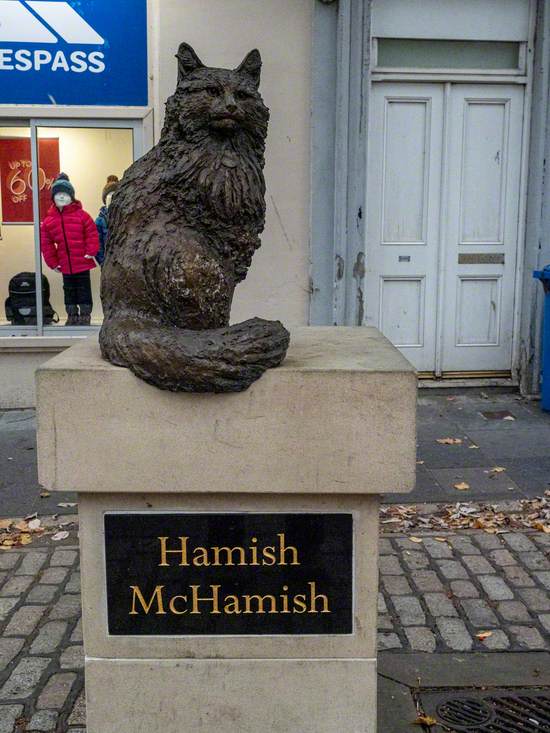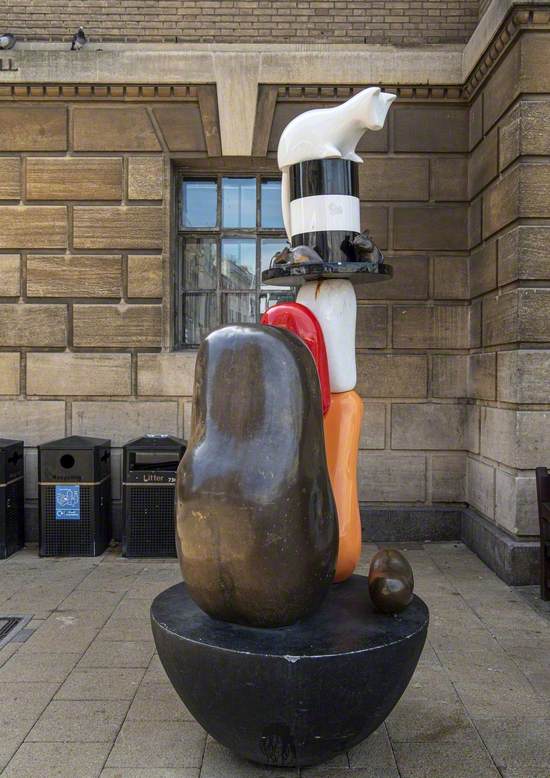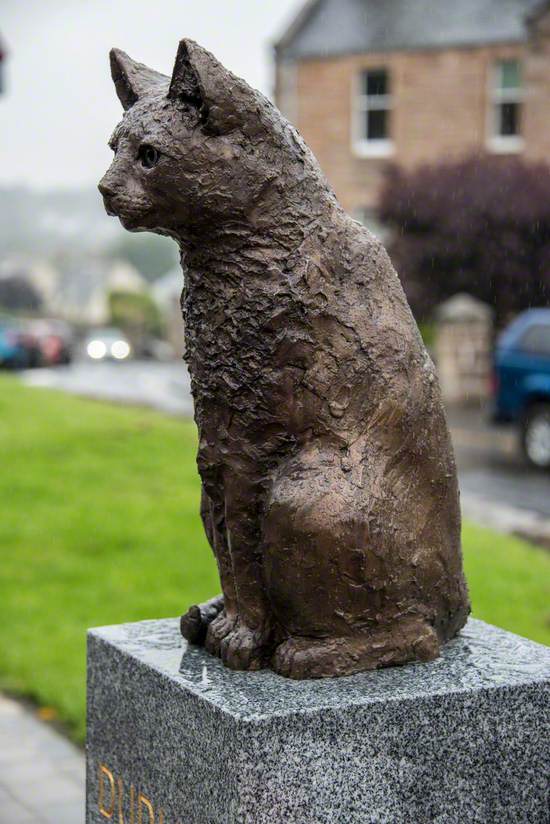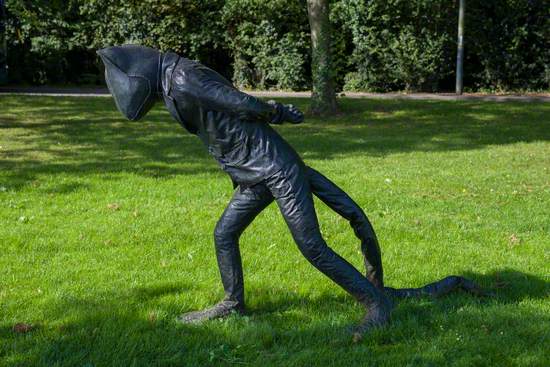While pet ownership has boomed over the last couple of years, a love of animals is nothing new in the UK. Cats have long been a firm favourite, and it is estimated that somewhere between a quarter and a third of all British households contain a feline friend (a large marmalade moggy is snoozing on my lap as I type). It is therefore perhaps no surprise that sculptures of cats crop up all across the country. From sea-voyaging mousers to crime-writing companions, here's a list of just a few of the cats to have been immortalised in public sculpture.
Hamish McHamish (1999–2014)
Staring paternalistically (or should that be ‘pawternalistically’? I’ll get my coat…) over the shoppers and students of the university town of St Andrews, this bronze statue commemorates Hamish McHamish. Hamish was a fluffy ginger cat who roamed the streets and shops of St Andrews, making friends with all and sundry and developing quite a dedicated following. He even had a book written about his day-to-day activities and his own Facebook page. Unfortunately, he died just a few months after his statue was unveiled, but at least his spirit remains immortalised in bronze, keeping an eye on his favourite haunts.
Matthew Flinders (1774–1814)
This statue nominally commemorates the life of explorer, navigator and cartographer Matthew Flinders, perhaps most famous for his circumnavigations of Ven Diemen’s Land (now Tasmania) and Australia, and his popularisation of the latter name. However, we’re not interested in Flinders here. Instead, I’d like to draw your attention to the handsome feline curling around his legs. This is Trim, a black and white cat who accompanied Flinders on many of his voyages. He survived tumbling overboard as a kitten as well as a shipwreck, and is now commemorated in statue form in both the UK and Australia.
The Cheshire Cat
Perhaps the most famous fictional feline of them all, the Cheshire Cat’s smile has become a byword for big grins everywhere. Although the expression ‘to grin like a Cheshire Cat’ dates back to the eighteenth century, it was Lewis Carroll’s depiction of the animal in his 1865 Alice’s Adventures in Wonderland that really cemented his reputation. This sculpture is part of an Alice in Wonderland trail in Conwy (Alice Liddell, the girl the story was written for, holidayed in the Welsh town) and leaves the viewer in no doubt about the Cheshire Cat’s most famous feature.
Catford Centre Cat
London is full of statues of cats (you can find a whole curation of them in our Lists of London series), but perhaps none capture the very essence of ‘catness’ as much as this one outside the Catford shopping centre. Hips high, tail waving, a reaching paw and a manic gleam in the eye – any owner would recognise this as a cat that’s cornered a mouse under the sofa. However, this particular mouser seems more enthused by the letter ‘F’ than any mice that might be around, and I wouldn’t give much for the F’s chances if the Catford cat gets hold of it.
The Malt Maker
Before they became the primarily domestic animals we think of today, fed on Whiskas (other pet food brands are, of course, available) and spending most of their time on the sofa, cats were generally kept by people for their rodent-control abilities. This explains the presence of the alert looking creature at the feet of this malt maker in Ware, Hertfordshire. Ware was an important centre for the malting industry (preparing grain for brewing or making whisky) from the seventeenth century to the end of the twentieth. All that tasty grain would have proved irresistible for the local mice, so cats like this must have been in high demand.
Snowy
Walter ‘Snowy’ Farr raised thousands of pounds for charity on the streets of Cambridge, with a particular dedication to charities supporting people with sight loss. His somewhat eccentric nature is nicely captured by this multi-coloured, mostly abstract work. Topping it off is Snowy’s top hat, complete with white cat and white mice. Snowy was often accompanied by live animals during his fundraising work, and one of his party pieces was to have his cat perch on his hat, while the mice scampered around the brim.
Dorothy L. Sayers (1893–1957)
Author Dorothy L. Sayers is famous for her crime stories and her crime-fighting creations Lord Peter Wimsey and Harriet Vane. She was also a noted cat-lover. Cats appear frequently in her novels and several of her characters are compared to cats. Sayers kept several cats throughout her life, and even wrote a poem to one (To Her Cat in Wartime), but unfortunately it’s not clear which one (if any in particular) is represented by her perky companion in this statue.
John Doubleday (b.1947) and J. B. Slythe and Art Bronze Foundry (founded 1922)
Bronze
Dudley the Cat
This is Dudley, a rescue cat taken in by Liz Burrows, who lived alongside the Union Canal in Linlithgow. Dudley’s statue was erected by the canal in memory of his owner in 2018. Since his installation, Dudley has become a firm favourite with people passing along the canal. Tail tucked neatly around his paws, ears pricked, head leaning forward ever-so slightly, he gives the impression of keeping a close watch on all the traffic passing along the canal in front of him. Or possibly he’s just eyeing up the nearest dozing duck for lunch.
David Annand (b.1948) and Powderhall Bronze (founded 1989) and W. L. Watson & Sons
Bronze & granite
Days of Judgement, Cat 1
We’ll end with something a little more surreal. Days of Judgement is a series of cat-like sculptures created by Laura Ford. Inspired by the anguished figures of Adam and Eve in Renaissance artist Masaccio’s The Expulsion from the Garden of Eden, they range from the pensive (like this example in Warwick) to others that look downright dejected and unhappy. With its humanoid, duck-footed form, and seemingly made from stitched together cloth, it makes for a strange sight stalking across the lawns of the University of Warwick.
Laura Ford (b.1961)
Bronze
H 170 x W 230 x D 100 cm
University of Warwick
Explore artists in this Curation
View all 13-
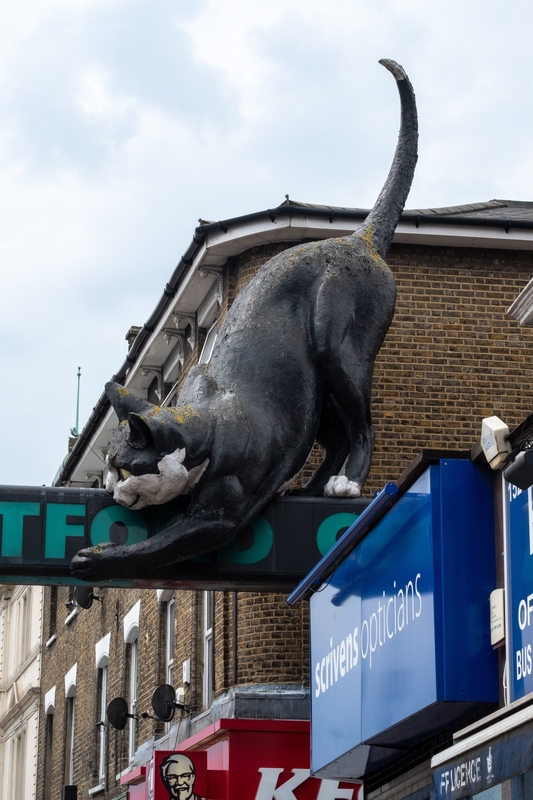 Embassy Signs
Embassy Signs -
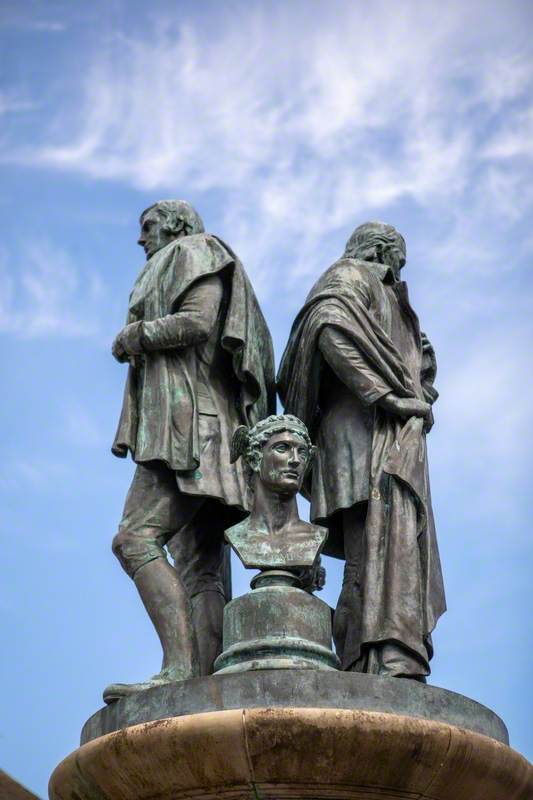 Powderhall Bronze
Powderhall Bronze -
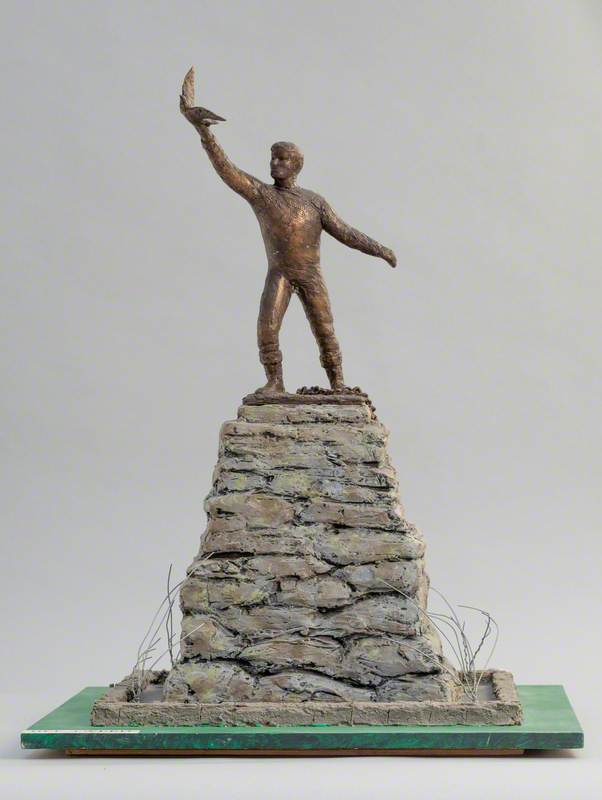 Jill Tweed (b.1931)
Jill Tweed (b.1931) -
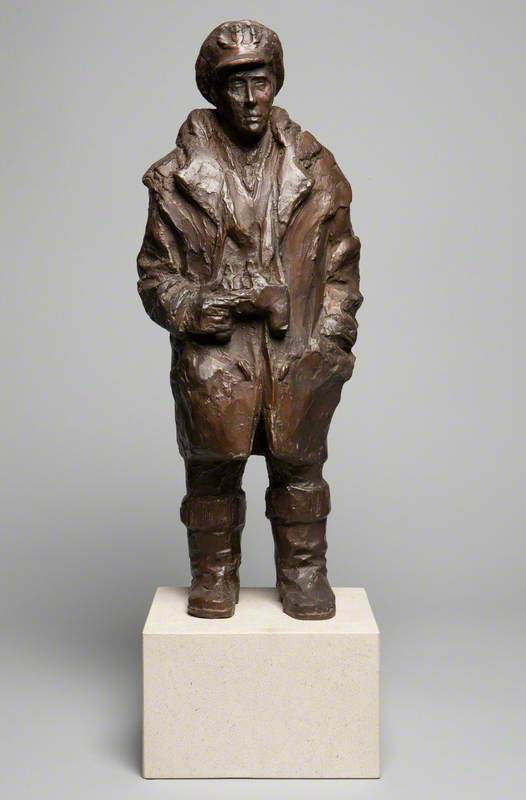 Art Bronze Foundry
Art Bronze Foundry -
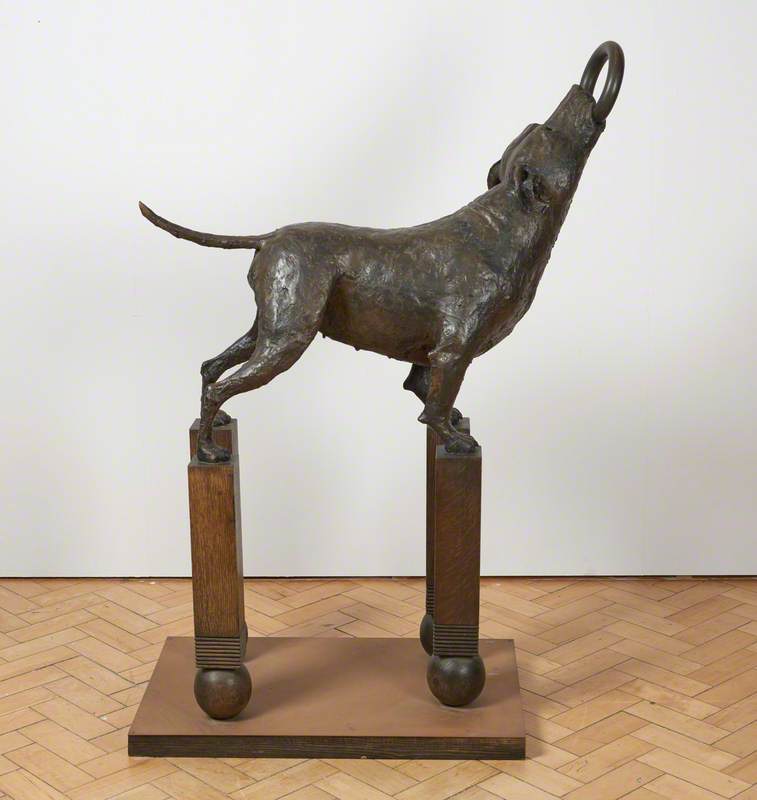 David Annand (b.1948)
David Annand (b.1948) -
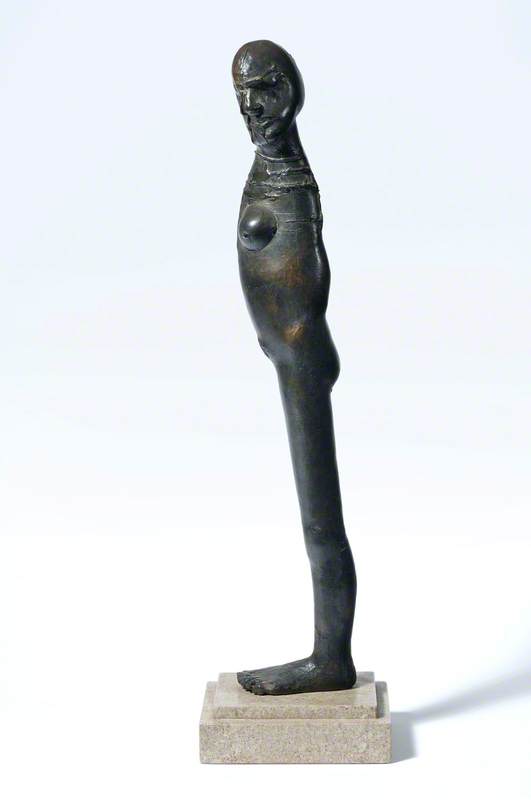 John Doubleday (b.1947)
John Doubleday (b.1947) -
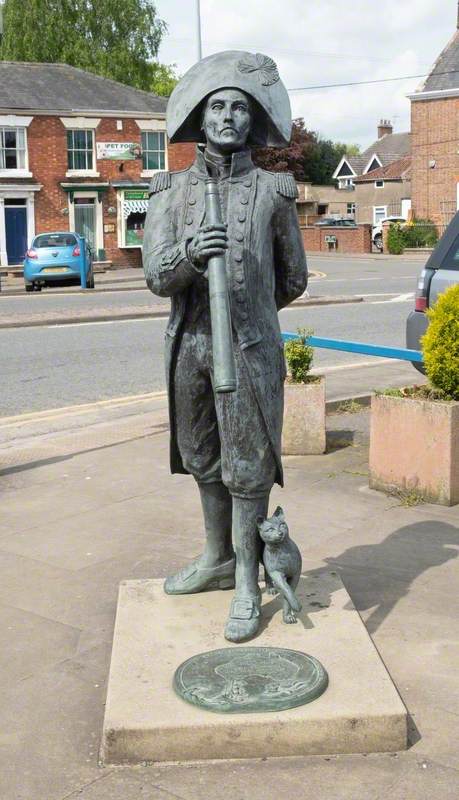 Judith Holmes Drewry (1950–2011)
Judith Holmes Drewry (1950–2011) -
 Owen Luder (b.1928)
Owen Luder (b.1928) -
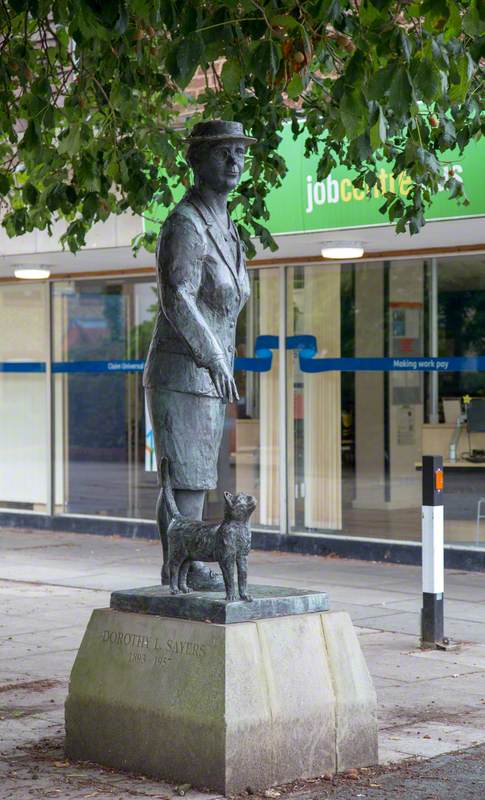 J. B. Slythe
J. B. Slythe -
 Laura Ford (b.1961)
Laura Ford (b.1961) - View all 13
